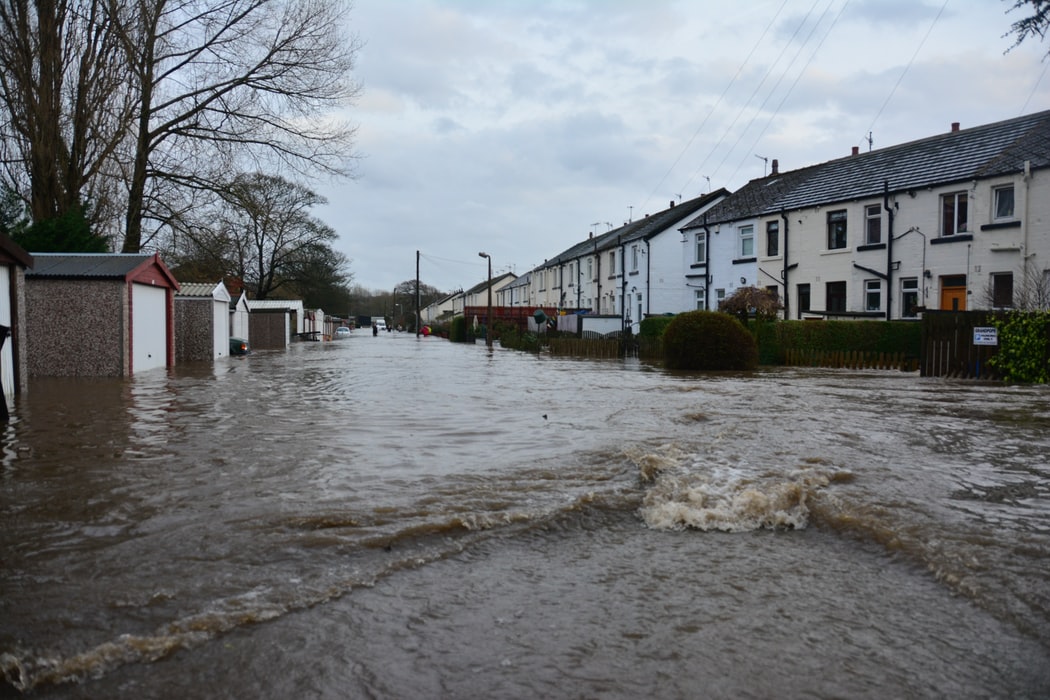How to Build Out a Flash-Flood Safety Plan for Your Family In California (and Why They Matter)

Flash-floods are a disaster that strikes quickly and leaves devastating damage in their wake. In 2019 alone they were responsible for almost 4 billion dollars in terms of lost property, not to mention the incalculable loss of human life.
In my experience flooding is often overlooked by homeowners, especially if they feel safe due to not living by large bodies of water. This is a false sense of security, and if you currently live in California or plan to move there soon, then you need to understand and plan for the serious risks of flash-flood.
While wildfires and earthquakes more commonly dominate the headlines, flash-floods poise an equally serious and prevalent risk. There’s not an area of the state that’s exempt, as in the past 25 years all of the 58 counties have experienced flooding at least once.
There’s no one-step solution, but by covering all the basics of a safety plan, you put yourself in a much stronger position when the time to act comes. In the event of disasters every minute matters. To make the most of each one, you need a plan that can guide you to safety.
Prepare a Plan
For both ourselves and our families’ safety, it becomes not just recommended but vital you create a comprehensive plan to respond to flash-floods specifically.
The first thing you should do is see where your house ranks in terms of flood risk. This can be done in a variety of ways, but the best overall way to see your home’s risks for floods and other hazards is through a natural hazard disclosure, or NHD report, as it outlines all the major environmental threats.
Sellers are required to disclose this to potential buyers, and it’s essential to read it thoroughly so you have the best information at hand about your home’s inherent disaster risks. Ensure you have comprehensive flooding insurance so that after the disaster you can financially rebound and return to normal life.
After learning your location’s likelihood of flooding, you can then start to gather necessary supplies and data. Look at the time of year the floods typically occur, and how the area handled it last time. Community feedback and communication both before and during a flood can be a powerful asset.
Assemble an emergency kit and keep it somewhere safe. Within it should be non-perishable foods, cleaning supplies, potable water, and ideally, an alternative form of communication or news should the power grid fail.
Periodically check that all electronic devices such as flashlights, phones, and radios are fully charged, and have an external battery or generator around as well for good measure.
Before the flood occurs, consider turning off the power to your home to avoid permanent electrical damage. Do a walk-through of the agreed evacuation route from the house should the need arise. With our supplies and plan formulated, the next step is to make sure our actions during the flood itself are thought out as well.
Staying Safe During
Once you know the inherent risks of your area, then it’s time to talk with your loved ones about how to act in the event of a flood as how we act during a flood is of equal importance to the supplies we have on hand.
Discuss what rooms will be used and off-limits due to risk. Basements, attics, or any enclosed spaces should be avoided, and designate one area for the family to gather in for the duration of the storm. Avoid using appliances during a flood unless necessary. Do not go out onto the rooftop of your house unless instructed to by the authorities and awaiting rescue.
Boil tap water before drinking it until the local government has confirmed its safety. Do not use water from a filled tub or sink for anything other than flushing, as it can be contaminated. Avoid all contact with the floodwater itself should it enter your house, and be sure to check food for spoilage before consuming.
If you are caught outside, do not attempt to walk, swim or drive through the flood. Moving water is deceptively strong and it’s commonly known that only six inches of moving water can knock you off your feet, and 12 inches to carry away a small car. Stay inside your home as much as possible, and listen to the local alerting systems to stay up to date on the flood.
Once you are through the worst of the storm and things start to settle down, it’s time to move on to the review portion of your safety plan.
After the Event
An important part of any plan is the follow-up, learning from experience, and adapting the plan based on this feedback. When lines of communication are accessible again, contact friends and family to let them know your status and to confirm their own. Stay up to date on local weather reports and road conditions.
After you are sure the worst has passed, then move on to inspecting your home. Time is of the essence to restore your home and its contents following a flood to avoid lasting damage.
Be mindful of any signs of water damage to the foundation or an improperly functionally drainage system. Take photos and videos before moving damaged items in case you need them for insurance purposes later.
When cleaning and repairing your home, use protective gear for hands, feet, and face to avoid dangerous exposure to mold and other debris. Await word from the local authorities before leaving your home.
California can be a dream to live in, but flash-floods can be a nightmare for those caught unaware and unprepared for their effects. Review your family’s safety plan at least once a year, everything from preparing, what to do during, and how to act afterward. Having a safety plan outlined can be the deciding factor in protecting your family and saving your home.

